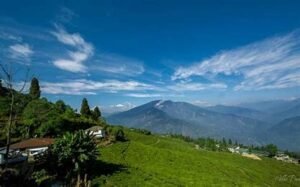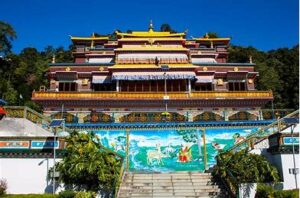Lai Haraoba is one of Manipur’s most important and oldest festivals. It is a ritualistic festival dedicated to pleasing the traditional deities of the Meitei community. Meaning “Merry Making of the Gods,” Lai Haraoba is celebrated with music, dance, and rituals. It serves as a cultural bridge connecting the present generation to its rich heritage.
Historical Roots
Lai Haraoba traces its roots to pre-Hindu Meitei culture. It dates back centuries, even before the introduction of Vaishnavism in Manipur. The festival is dedicated to the Umang Lai, the sylvan deities worshipped by the Meiteis. According to legends, the festival reenacts the creation of the universe, depicting the divine actions of the gods.
The rituals and performances of Lai Haraoba reflect the beliefs of the Meitei people about their origin and connection with nature. This festival remains central to their cultural identity despite various external influences over the years.
Language and Communication
Language plays a key role during Lai Haraoba. Ritual chants and invocations are performed in Manipuri, the official language of Manipur. The Maibas (priests) and Maibis (priestesses) conduct the rituals while chanting sacred hymns and singing folk songs that narrate stories of creation, devotion, and human life.
The transmission of oral literature during Lai Haraoba ensures the preservation of cultural knowledge and traditional practices among the Meitei community.
Festivals and Celebrations
Lai Haraoba is celebrated in various parts of Manipur, usually lasting several days. The festival involves the reenactment of various mythological stories through dance and songs. It begins with the raising of the ceremonial bamboo pole, known as ‘Koubru,’ which symbolizes the connection between heaven and earth.
During the festival, devotees pay homage to the Umang Lai and offer prayers for prosperity and protection. Ritual dances known as “Laibou Jagoi” are performed by Maibis to depict creation and other divine actions. These performances are often accompanied by traditional music.
Arts, Crafts, and Music
Lai Haraoba showcases the rich artistic heritage of Manipur. Traditional Manipuri dance forms, especially the Laibou Jagoi and Khamba Thoibi dance, are performed to honor the deities.
Artisans also contribute to the festival by creating ceremonial attire, ornaments, and decorative pieces used in the rituals. Music forms an essential part of the celebration, with instruments like the Pena (a traditional fiddle) playing a central role in the performances.
Cuisine and Culinary Traditions
During Lai Haraoba, special dishes are prepared and shared among the community. Popular Manipuri dishes such as Eromba, Singju, and Chak Hao (black rice) desserts are often served during the festivities.
The sharing of food reflects the communal spirit and unity that the festival promotes.
Attire and Ornamentation
Traditional attire plays a significant role during Lai Haraoba. Women wear Phanek and Innaphi, while men don dhotis and ceremonial headgear. The dancers and performers often wear intricately designed ornaments and accessories that hold cultural significance.
The traditional clothing and jewelry not only add visual appeal but also signify respect for the deities and ancestors.
Beliefs and Values
Lai Haraoba represents the deep-rooted beliefs of the Meitei people in their ancestors and deities. The festival signifies harmony between humans, nature, and the divine. It reflects values of devotion, respect, and the importance of preserving cultural traditions.
The rituals are meant to honor the gods and seek blessings for prosperity, health, and protection.
Customs and Etiquette
During Lai Haraoba, respect for elders and adherence to traditional customs are emphasized. The Maibas and Maibis guide the community through rituals, maintaining decorum and ensuring that the traditions are performed accurately.
The festival also teaches younger generations about their cultural heritage through participation and observation.
Architecture and Symbols
The ceremonial pole ‘Koubru’ is a significant symbol of Lai Haraoba. It represents the bridge between the mortal world and the divine. Temporary shrines are often constructed to honor the deities, showcasing traditional architectural designs.
Various symbols used during the festival hold spiritual meanings, representing aspects of life, nature, and the divine.
Oral Traditions and Storytelling
Oral traditions are central to Lai Haraoba. The Maibas and Maibis share mythological stories and ancient knowledge through chants and songs. These oral traditions are essential for preserving the history and cultural practices of the Meitei people.
The storytelling aspect of Lai Haraoba also serves to educate the youth about their roots and identity.
Interactions with Nature
Lai Haraoba reflects the Meitei community’s deep connection with nature. The rituals often involve natural elements, symbolizing harmony between humans and their environment.
This interaction is not only spiritual but also practical, promoting sustainable practices and respect for natural resources.
Challenges and Preservation
Modernization and the influence of external cultures pose challenges to the preservation of Lai Haraoba. Younger generations are increasingly drawn away from traditional practices.
Efforts are being made to preserve the festival by documenting rituals, promoting awareness, and encouraging youth participation.
Contributions to the Broader Region and World
Lai Haraoba has contributed significantly to Manipuri culture and beyond. The dance forms performed during the festival have inspired classical Manipuri dance, now recognized globally.
The festival’s emphasis on storytelling and music has also attracted researchers and cultural enthusiasts from around the world.
Connection to Northeast India
Lai Haraoba holds a special place in the cultural landscape of Northeast India. It shares similarities with other indigenous festivals celebrated across the region, highlighting the region’s rich diversity and common cultural threads.
Conclusion
Lai Haraoba is not just a festival. It is a cultural treasure that continues to thrive despite various challenges. As the modern world advances, it is crucial to preserve the essence of Lai Haraoba for future generations. By promoting awareness, documentation, and participation, the Meitei community can ensure that this beautiful tradition remains vibrant and meaningful. Understanding and respecting cultural practices like Lai Haraoba enriches our collective heritage.




